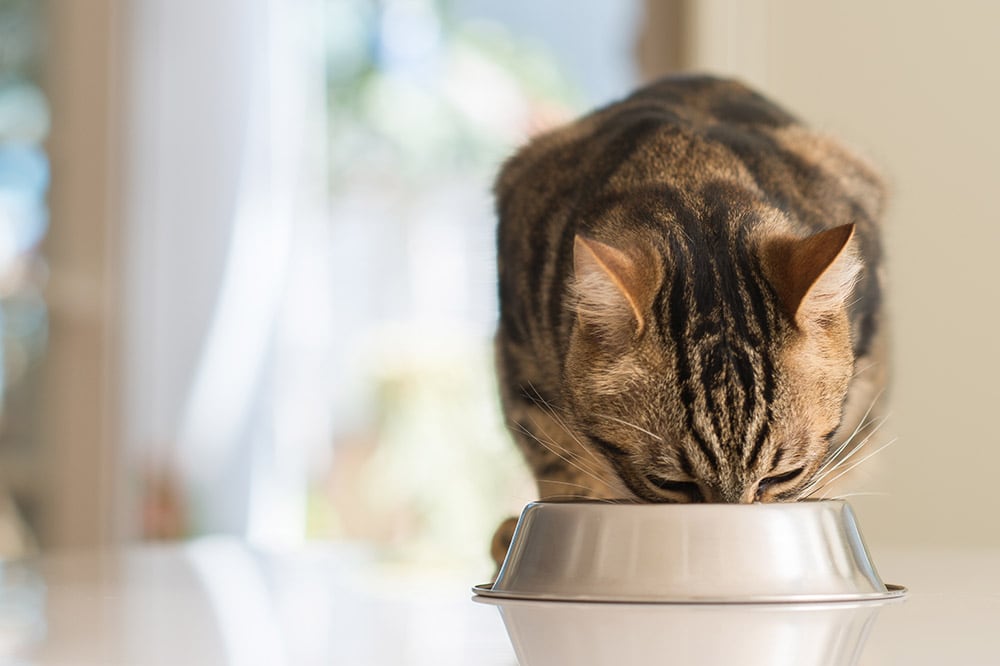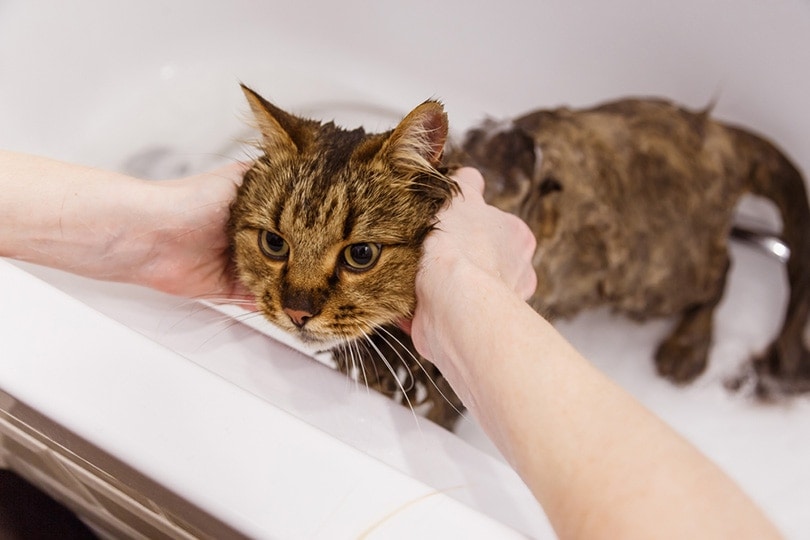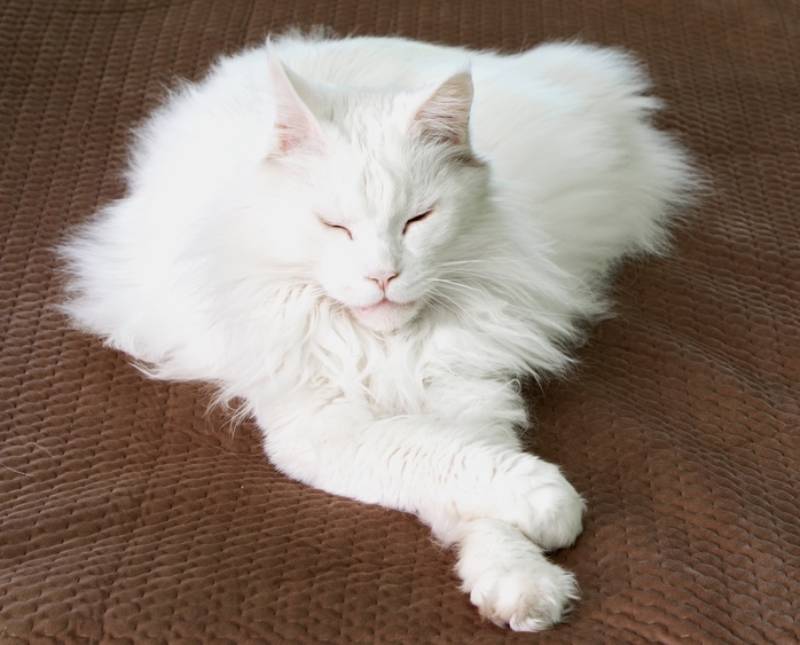Do Cats Like Baby Talk? What Experts Say
By Luxifa Le
Updated on
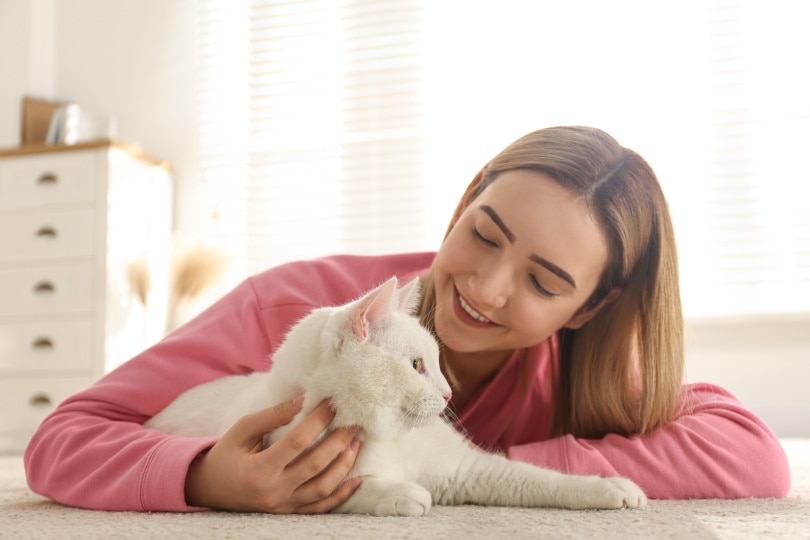
Talking to our pets in a high-pitched voice is a deeply ingrained behavior humans experience towards creatures we deem “cute.” However, studies show that baby talk improves the relationship between parents and their children. While the speech is generally more straightforward, it makes it easier for babies to understand and helps them learn the facets of spoken communication.1
Similarly, we speak to our cats in higher pitches and simple grammar because we identify them as “baby” members of our “packs.” We have acknowledged that they can’t actually understand us in doing so. So, we adjust our speech to make it more understandable with fewer language skills. Luckily, cats tend to like the facets of human baby talk. So, you don’t have to stop or readjust your speech with your cat.
Cat Communication 101: Do Cats Understand Baby Talk?
Cats don’t understand baby talk the way that human babies do. However, no comprehensive studies have been done on cats learning spoken language.
The domestic cats we have as pets are descendants of African Wildcats. While many cat species like tigers and lynxes are solitary animals, African Wildcats are known to have overlapping territories, and African Wildcat mothers are very involved parents.
These social connections between African Wildcats aided in the human domestication of African Wildcats that have yielded the cats we now raise as pets in our homes. However, there are notable differences in how domestic cats interact and communicate with each other compared to interacting with us.
Studies of cat communication indicate that cats primarily communicate using body language and scent. Vocalization among cats is rare. Further investigation shows that cats vocalize more with humans than with other cats. Feral cats—cats who have had little to no interaction with humans during their formative months—are generally silent animals; they make few sounds altogether.
This might leave you feeling a bit ignored by your cat. After all, if they do not need vocal communication, it makes sense that they’d likely ignore your communication as meaningless. But cats actually pay attention to human communication more than we know.
Cats have been noted as using their human owners’ facial expressions and vocal communications as referential emotional information. When your cat interacts with a new object, they may first look at your face to see how you are reacting to it before drawing their conclusions. If you respond positively to things, your cat is more likely to treat them with positive emotions. So, it makes sense to conclude that cats have some understanding of what they think our vocalizations mean.
However, despite their lack of natural vocal communication, cats have standards for spoken communication. For example, a study on cat meows indicates that cats generally meow in a higher pitch when they’re happy, similar to humans who have been known to squeal or scream when presented with something pleasing.
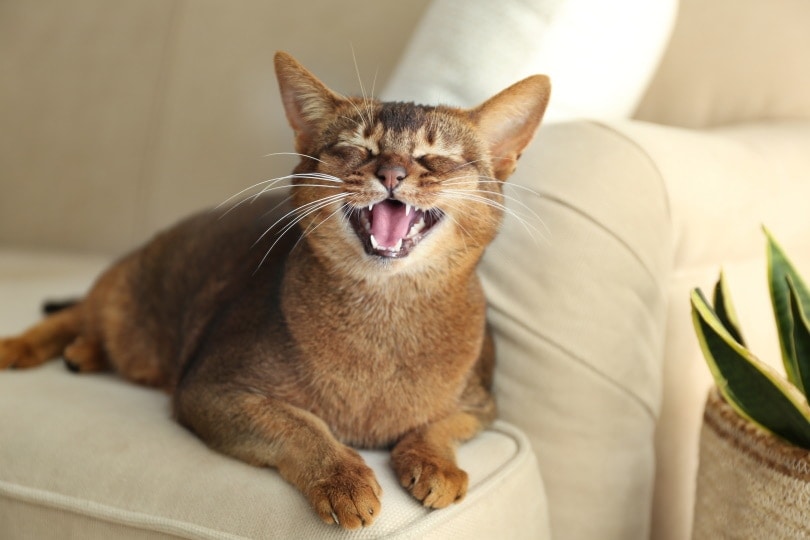
Pet-Directed Speech: Why We Feel the Urge to Baby-Talk Our Pets
A study done by Tobey Ben-Aderet delves into why we feel the urge to baby-talk to our pets. Traditionally, the timbre and grammatical structures we use with our pets would be considered “infant-directed speech.” Still, since there’s no human infant in question, there’s a clear pattern of infant-directed speech when interacting with pets. Thus, Ben-Aderet coined “dog-directed speech,” later amended to “pet-directed speech.”
Ben-Aderet observed that when speaking with their pets, adult humans tended to use a higher and more variable pitch as they would if they were interacting with a human infant. This speaking pattern was accompanied by a more precise pronunciation of syllables and a slower speaking tempo.
The study found that humans will use dog-directed speech at a dog of any age. However, it did find that the most dramatic differences in speech occurred when a human was speaking to a puppy; their pitch increased by a mean value of 21% compared to 11–13% when speaking to an adult dog.
The study concluded that showing that humans used “pet-directed speech” at dogs of all ages indicates that the speaking register we associate with babies and pets is used for non-speaking conversation participants, rather than just juvenile ones.
Thus, we can conclude that our urge to baby-talk our pets comes from their personal inability to respond in kind.
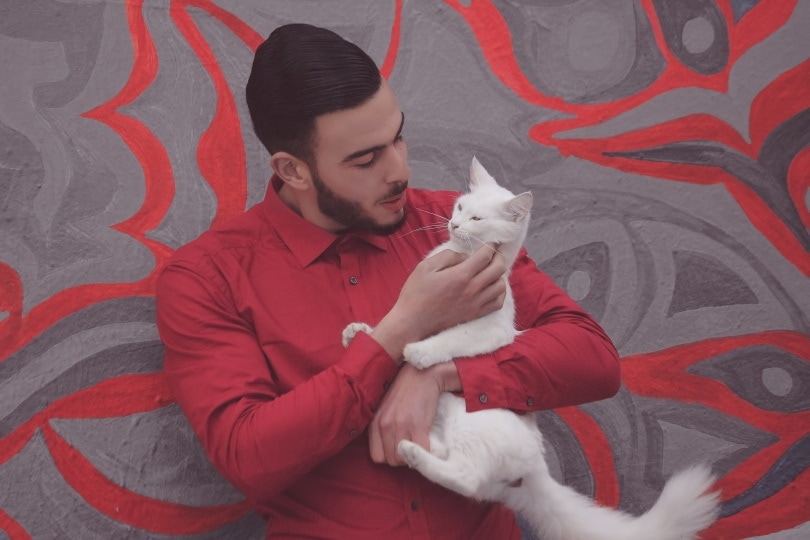
How Do Cats Communicate with Each Other?
Cats have three main methods of communication: body language, scent, and vocalizations. However, as Wailani Sung covers, cats don’t generally communicate with vocalizations, and feral cats are quiet animals, silent even. So, while cats, especially those raised around humans, may use meows to greet each other, they don’t have long vocal conversations like humans or some birds.
Body Language
Body language is the most potent factor of communication between cats. Cats pay attention to each other’s body language down to the angle of the ears and position of the tail. In this way, cats can express their emotions and feelings to each other without ever making a sound.
Cats may groom each other to show affection and happiness without sound. Some cats may lick each other to exchange greetings or to comfort a distraught friend. They may even lay down to share a bath together to bond.
Scent
A cat’s scent is another essential factor in cat communication. Cats constantly exchange scents by rubbing up against each other and objects they come in contact with. This helps them mark their territory and let other cats in the area know what kind of mood they’re in should they meet up face-to-face.
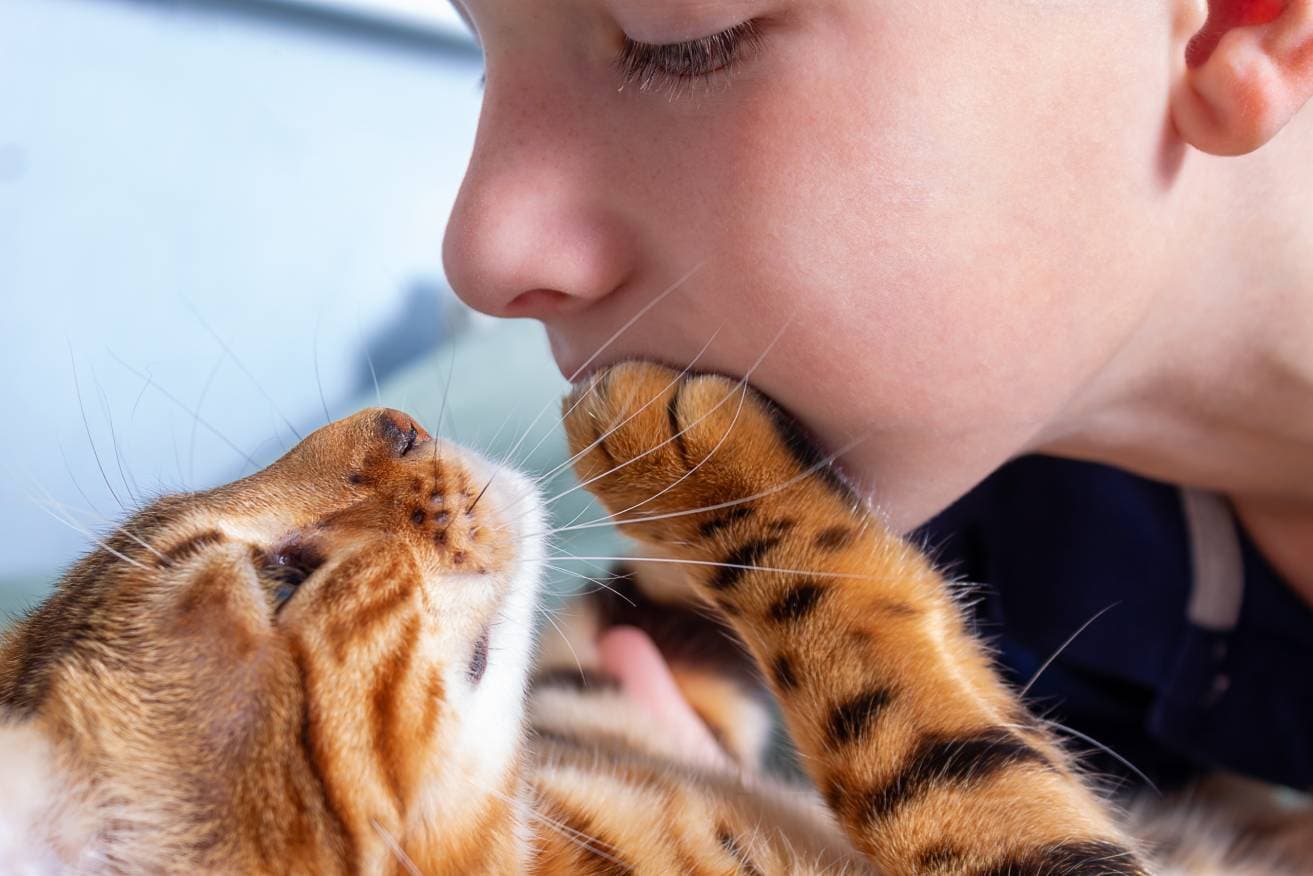
Final Thoughts
Cat communication is serious business, and they don’t do it using methods humans are used to. Cats like being spoken to in high pitches. So, our habit of baby talking to them is an ultimate positive for our relationships with our cats.
Featured Image Credit: New Africa, Shutterstock

